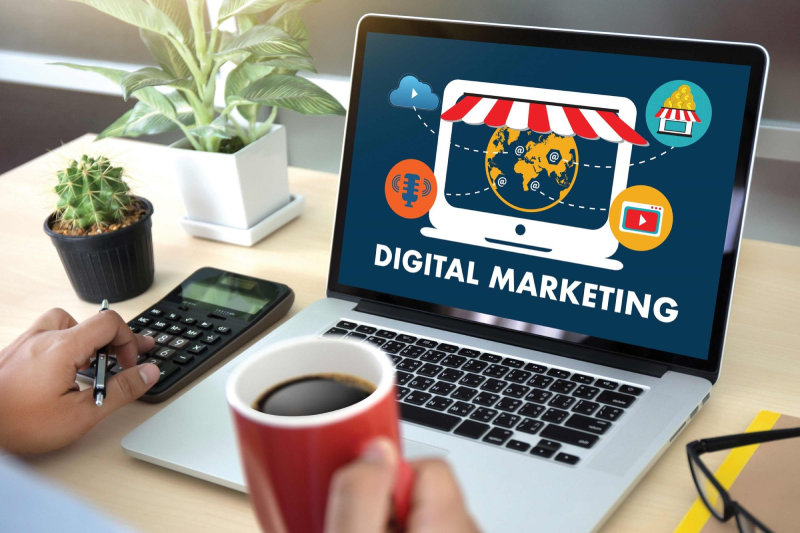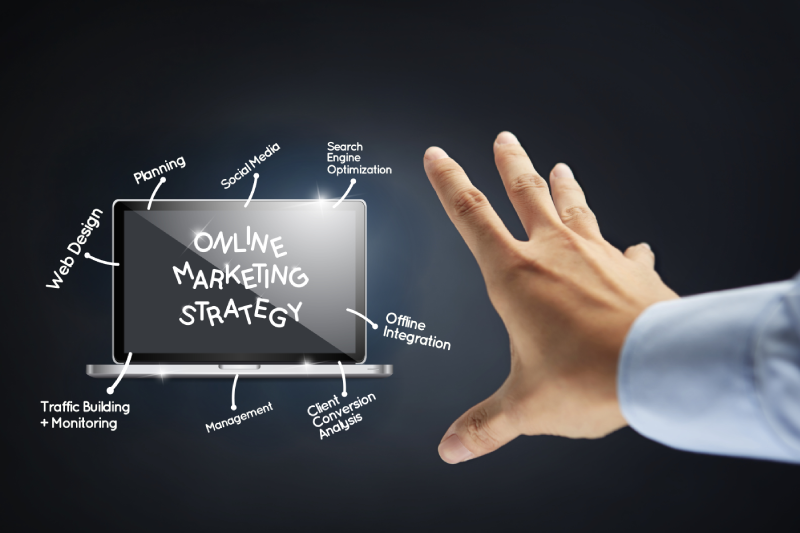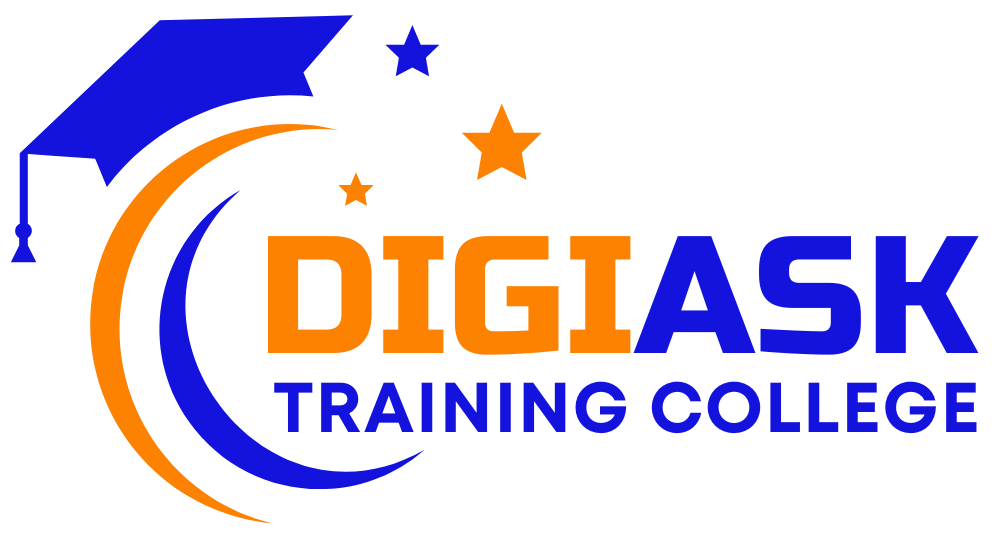Digital marketing is no longer optional—it’s essential. In today’s fast-paced, tech-driven world, businesses must adapt to stay competitive. But what exactly is digital marketing, and how can you leverage it to grow your brand? This comprehensive guide dives deep into the key components of digital marketing, explores advanced strategies, and uncovers the future trends shaping the industry. By the end, you’ll have actionable insights to craft a winning digital marketing strategy that drives results.

Why Digital Marketing Matters
Before we dive into the nitty-gritty, let’s address the elephant in the room: Why should you care about digital marketing?
- Global Reach: Unlike traditional marketing, digital marketing allows you to connect with audiences worldwide. Whether you’re a small local business or a global enterprise, the internet breaks down geographical barriers, enabling you to reach customers in every corner of the world.
- Cost-Effective: With tools like social media and email marketing, you can reach thousands without breaking the bank. Compared to traditional advertising methods like TV or print, digital marketing offers a higher ROI, especially for small businesses with limited budgets.
- Measurable Results: Track every click, conversion, and ROI in real-time. Tools like Google Analytics and social media insights provide detailed data, allowing you to refine your strategies and maximize results.
- Personalization: Tailor your messaging to meet the unique needs of your audience. From personalized email campaigns to targeted ads, digital marketing lets you speak directly to your customers, making them feel valued and understood.
Still not convinced? Let’s explore the key components of digital marketing and how they work together to create a powerful strategy.
Key Components of Digital Marketing
Digital marketing is a multifaceted discipline. To master it, you need to understand its core components. Here’s a breakdown of the most critical elements:
1. Search Engine Optimization (SEO)
SEO is the backbone of digital marketing. It’s the process of optimizing your website to rank higher on search engine results pages (SERPs). Why does this matter? Because 75% of users never scroll past the first page of search results. If your website isn’t on the first page, you’re missing out on a massive amount of traffic.
How to Master SEO
- Keyword Research: Start by identifying the terms your audience is searching for. Tools like Google Keyword Planner and SEMrush can help you find high-volume, low-competition keywords. For example, if you run a bakery, you might target keywords like “best gluten-free cupcakes near me” or “affordable wedding cakes.”
- On-Page Optimization: Optimize your website’s title tags, meta descriptions, headers, and content. Use keywords naturally and focus on creating high-quality, engaging content. For instance, ensure your blog posts are well-structured with H1, H2, and H3 tags, and include internal links to other relevant pages on your site.
- Off-Page Optimization: Build backlinks from reputable websites to boost your site’s authority. Engage in guest blogging, influencer outreach, and social media marketing to earn these valuable links. For example, collaborate with industry influencers to create content that links back to your site.
Pro Tip: SEO isn’t a one-time task. It’s an ongoing process that requires regular updates and adjustments. Stay updated with algorithm changes and continuously refine your strategy.
2. Content Marketing
Content is king, and content marketing is the art of creating and distributing valuable, relevant content to attract and engage your target audience. Whether it’s a blog post, an e-book, or a video, great content builds trust, establishes authority, and drives conversions.
Types of Content That Drive Results
- Blog Posts: Share insights, tips, and industry news to establish your brand as a thought leader. For example, a fitness brand might publish articles like “10 Tips for Staying Fit During the Holidays” or “The Science Behind Intermittent Fasting.”
- E-books and Whitepapers: Offer in-depth resources to capture leads and nurture them through the sales funnel. A software company, for instance, could create an e-book titled “The Ultimate Guide to Project Management Tools.”
- Videos and Webinars: Engage your audience with dynamic, visual content that explains complex topics in an easy-to-digest format. A skincare brand might host a webinar on “How to Build a Skincare Routine for Acne-Prone Skin.”
Did You Know? Companies that publish 16+ blog posts per month get 3.5x more traffic than those that publish fewer than four.
3. Social Media Marketing
Social media is where your audience hangs out. Whether it’s Facebook, Instagram, LinkedIn, or TikTok, social media marketing allows you to connect with your audience on a personal level. It’s not just about posting content—it’s about building relationships and fostering engagement.
Steps to Social Media Success
- Choose the Right Platforms: Focus on the platforms where your target audience is most active. For example, if you’re targeting Gen Z, TikTok and Instagram are your go-to platforms.
- Plan Your Content: Create a content calendar to ensure consistent posting. Mix it up with images, videos, polls, and user-generated content. For instance, a fashion brand might post outfit inspiration, behind-the-scenes content, and customer testimonials.
- Engage Your Community: Respond to comments, answer questions, and participate in conversations. Social media is a two-way street! For example, if a customer leaves a positive comment, thank them and ask for their feedback.
Fun Fact: 54% of social media users research products on social platforms before making a purchase.

4. Email Marketing
Email marketing remains one of the most effective digital marketing channels. Why? Because it’s personal, direct, and cost-effective. With the right strategy, you can nurture leads, drive sales, and build lasting relationships with your audience.
How to Make Your Emails Stand Out
- Personalization: Use the recipient’s name and tailor the content to their preferences. For example, segment your email list based on purchase history and send personalized product recommendations.
- Automation: Set up automated email sequences to nurture leads and re-engage inactive subscribers. For instance, send a welcome email series to new subscribers or a cart abandonment email to potential customers.
- Analytics: Track open rates, click-through rates, and conversions to optimize your campaigns. Use A/B testing to experiment with different subject lines, content, and CTAs.
Quick Stat: Personalized email subject lines can increase open rates by 26%.
5. Pay-Per-Click (PPC) Advertising
PPC advertising is like SEO’s fast-paced cousin. It allows you to buy visibility on search engines and social media platforms. With PPC, you only pay when someone clicks on your ad, making it a cost-effective way to drive traffic and conversions.
Why PPC Works
- Immediate Results: Unlike SEO, PPC delivers instant visibility. For example, if you’re launching a new product, PPC can help you generate buzz right away.
- Targeted Reach: Use advanced targeting options to reach your ideal audience. For instance, you can target ads based on demographics, interests, and even specific keywords.
- Measurable ROI: Track every dollar spent and adjust your campaigns for maximum efficiency. Tools like Google Ads provide detailed analytics, so you know exactly what’s working and what’s not.
Pro Tip: Start with a small budget and scale up as you identify what works. Test different ad creatives, targeting options, and landing pages to optimize your campaigns.
Advanced Strategies in Digital Marketing
Now that we’ve covered the basics, let’s explore some advanced strategies that can take your digital marketing efforts to the next level.
1. AI-Powered Personalization
Artificial intelligence (AI) is transforming how businesses connect with their audiences. By analyzing customer data, AI can deliver hyper-personalized experiences that drive engagement and conversions.
How to Leverage AI
- Predictive Analytics: Use AI to forecast customer behavior and tailor your marketing efforts accordingly. For example, an e-commerce store might use AI to predict which products a customer is likely to buy next.
- Chatbots: Provide instant customer support and recommendations with AI-powered chatbots. For instance, a travel agency could use a chatbot to help customers find the best flight deals.
- Dynamic Content: Deliver personalized content based on user behavior and preferences. For example, an online retailer might show different product recommendations to different users based on their browsing history.
Did You Know? 80% of consumers are more likely to purchase from brands that offer personalized experiences.
2. Blockchain for Digital Marketing
Blockchain technology is revolutionizing digital marketing by increasing transparency and security.
Benefits of Blockchain
- Transparent Advertising: Reduce ad fraud by creating a verifiable record of ad impressions and clicks. For example, blockchain can ensure that advertisers only pay for genuine clicks, not bots.
- Secure Transactions: Use smart contracts to automate payments between advertisers and publishers. This eliminates the need for intermediaries, reducing costs and increasing efficiency.
- Data Privacy: Give users control over their data with blockchain-based identity management systems. For instance, users can choose what information to share with advertisers, enhancing privacy and trust.
Fun Fact: Blockchain can save businesses up to $12 billion annually by reducing ad fraud.

3. The Impact of 5G Technology
The rollout of 5G is set to transform digital marketing by enabling faster internet speeds and more reliable connections.
What 5G Means for Marketers
- Richer Content Experiences: Create immersive AR and VR experiences that captivate your audience. For example, a furniture brand could use AR to let customers visualize how a sofa would look in their living room.
- Real-Time Personalization: Deliver personalized content and offers in real-time. For instance, a retail app could send a discount code for a product the customer is browsing.
- Enhanced Mobile Marketing: Optimize your website and content for mobile devices to take advantage of faster load times. With 5G, mobile users can enjoy seamless browsing and streaming experiences.
Quick Stat: 5G is expected to reach 1.4 billion connections by 2025.
4. Sustainable Digital Marketing
Sustainability is no longer a buzzword—it’s a business imperative. Consumers are increasingly demanding eco-friendly practices from the brands they support.
How to Go Green
- Green Hosting: Choose hosting providers that use renewable energy. For example, companies like GreenGeeks and SiteGround offer eco-friendly hosting solutions.
- Energy-Efficient Design: Optimize your website for faster load times and lower energy consumption. Compress images, use efficient coding practices, and minimize the use of heavy scripts.
- Sustainable Content: Highlight your brand’s sustainability efforts and promote responsible consumption. For instance, a fashion brand could create content about its use of recycled materials.
Pro Tip: 66% of consumers are willing to pay more for sustainable brands.
The Future of Digital Marketing
The digital marketing landscape is constantly evolving. Here’s what you need to know to stay ahead:
- AI-Powered Personalization: Expect even more tailored experiences as AI continues to advance.
- Blockchain Adoption: Increased transparency and security will build consumer trust.
- 5G Revolution: Faster speeds will enable richer, more interactive content.
- Sustainability Focus: Eco-friendly practices will become a key differentiator.
Conclusion
Digital marketing is a powerful tool that can help you connect with your audience, drive engagement, and grow your business. By mastering the key components—SEO, content marketing, social media, email marketing, and PPC—you can create a strategy that delivers measurable results.
But don’t stop there. Stay ahead of the curve by embracing advanced strategies like AI-powered personalization, blockchain, and sustainable practices. The future of digital marketing is bright, and those who adapt will thrive.
Ready to take your digital marketing to the next level? Start today and watch your brand soar!
